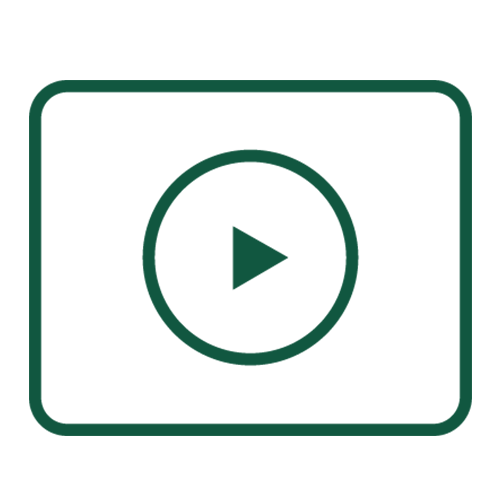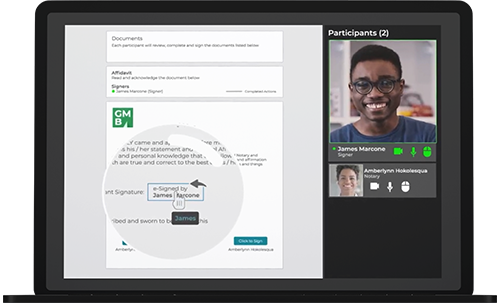Interview transcript
Harold Sinnott: I have the pleasure of being with Raquel Lima. Raquel, it's great to be with you. Raquel is Product Manager, and she has a lot of challenges. But before we go to your product, Raquel, tell me about yourself.
Raquel Lima: Yes, sure. My name is Raquel Lima. I am from Brazil, but I'm based in Montreal. I've been here at OneSpan for a bit over two years now. And my role here as a product manager is to lead what we call our Interact pillar.
When we were talking about the OneSpan Notary, one thing that was guiding us through development was that even though the regulation is a bit complex, the product should not be. So, if there was one word guiding us: it was simplification. We need to keep it simple for our users. You know, here at OneSpan, our clients, our users, they are the focus. So, it was very clear for us that we had to build something that was seamless, easy and frictionless, that they could see the benefit from. So, what we did was we worked with the idea of co-creation, which I really like as a product manager, and I have a catchy phrase that I say; that we didn't build this product for the notaries, but with the notaries. So, from early on, since the research, we made sure that we were always engaging and talking to notaries across the US and then with our clients because they have notaries.
We made sure that whenever we had a new phase in development, a new phase in design even, they were part of the design review, providing feedback early on.
So, for OneSpan Notary, what we are doing is that we're leveraging this security that we have with the Virtual Room and the identity to bring the notarization to remote, what we call the remote online notarization. Let me ask you: when was the last time you had something notarized?
Harold Sinnott: Okay. That was a couple of weeks ago.
Raquel Lima: And how was it?
Harold Sinnott: Well, they sent me - I needed to notarize a document, an affidavit. I needed to go to the bank, to the branch in-person.
Raquel Lima: So, what was it for you, you had to take time from work? Most likely, because, you know, it's business hours. You had to drive to the bank, or take the bus, maybe, then you had to stay in line, wait for it. Meet with a notary. And then get your document notarized.
So, if we bring that to the remote environment, we make it easier not only for the notary, now they don't need to be in a physical branch. They can be in another location, like a call center, maybe even they can support multiple signers, or they can be working from home if they want. And for the signer on your side, you wouldn't need to leave your house, you wouldn't need to take your car. No waiting in line, you just meet the notary at the time you need to meet them to notarize the documents remotely.
And more importantly, because we were talking about identity, and everything we do here, we bring security and identity to the center. So, my follow up question was, when you met the notary, how did they verify your identity, how did they know you were Harold?
Harold Sinnott: Oh, yeah. Good question. Good question. Because I was surprised. I only showed my driver's license. They didn't ask me anything. I showed it, they read it and they gave it back to me immediately, almost immediately.
Raquel Lima: So, if we take into consideration that a driver's license is a good one because it's on the top 10 documents that have most identity fraud.
And 80% of the personas that are under that fraud are male personas. So that's not really secure. So, what we did with the OneSpan Notary is that before joining the session to get something notarized, our signers need to go through identity verification. So, you upload your driver's license, we check with a third party to make sure it's valid. It's not expired. It's a true document. Then not only that, but you also go through KBA we check your information based on your credit. So, you answer questions like, about your car or your house and things like that. So now we checked your identity, we authenticated you via knowledge, and once you enter the room, we actually display the image of that driver's license to the notary. So again, when they see you in the room, they can open your ID and do the same thing they did in person, which is to check the picture on the identity and against what they see on the camera. So, we actually increase the security, and everything that you do in that journey is part of the audit trail, which you don't get with meeting face to face.
Harold Sinnott: Exactly, exactly. So, it's much more secure. All the verification, the authentication, everything, for the notarization.
Raquel Lima: Yes. People tend to think that, because you're bringing something to the digital environment, you are losing security. But it's the opposite. As we bring things to remote, of course we have challenges; identity fraud, deep fakes. But here at OneSpan we have the security controls that we need to make sure that we track everything that happens and that we identify the users.
Harold Sinnott: Raquel, this sounds wonderful. I am very grateful to have this conversation. So, I want to thank you so much for having this time and I'm looking forward to learning more about OneSpan Notary.
Raquel Lima: Thank you so much.









